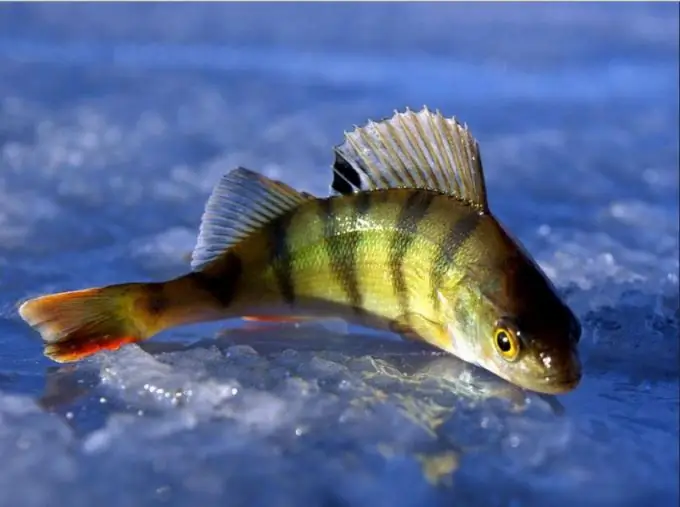River bass is distinguished by transverse dark green stripes on the sides. The sea bass in appearance is somewhat reminiscent of a river fellow. However, he is so different from him in many features of the internal and external structure that they are attributed not only to different families, but also to different orders of fish.

Instructions
Step 1
Dimensions. River perch has an oblong body covered with small scales. The size of the fish is not too large: the average length is 15-20 cm. The largest individuals reach a length of 50 cm. The mass of river perch can reach 1-2 kg, but these are the maximum values. The sea bass is comparable to its river counterpart: the smallest representatives reach 20 cm in length, and the largest individual is 1 meter long and weighs 20 kg.
Step 2
Color. Pay attention to the dull green color of the freshwater fish with a silver tint. On the sides of the river perch there are transverse dark green stripes. Their number: from 5 to 9. The back of the fish is painted in a very dark color, and the belly, on the contrary, is white. Take a look at the perch in different habitats: their color is significantly different. In deep forest freshwater lakes, the body of the perch is usually very dark in color. In shallow water bodies with a sandy bottom and good light transmission, the fish has a light color. Most representatives of the deep sea are dominated by red tones. No wonder the most popular is Sebastes pinniger. This is an orange or canary sea bass.
Step 3
Fins. The river perch has two dorsal fins that are very close to each other. The first dorsal fin is higher and longer than the second; moreover, it looks somewhat more aggressive due to the spiny rays. Take a closer look at the fin and you will see a black spot at the end: this is a distinctive feature of the species. The perch has a small hump in front of the first fin. Touch the second dorsal fin: its rays are soft. The pelvic fins have a red border, but they themselves are light. Feel the rays of the pelvic fins: they are prickly. The pectoral fins are slightly shorter in size than the pelvic fins: their color is bright orange. But do not touch the rays of the fins of the sea bass in any case: their ends are equipped with poisonous glands that cause painful local inflammation.
Step 4
Scales, mouth, gills. Pay attention to the structure of the scales: in river and sea bass it is almost the same. The scaly cover is very tight, and there are small spines at the ends. Because of this, the body of the fish is rather rough to the touch. Scales are also found on the cheeks. They are absent only on the caudal fin. The older the perch, the stronger and harder its scales. The fish's mouth is wide: there are several rows of bristle teeth in the cavity. Note that the perch has no tusks. The upper jaw ends in the vertical line of the middle of the eye. The iris of the eye of the river perch is yellow, and that of the sea bass is red. Look at the gills: there are sharp spines at the back of the gill covers. In this case, the gill membranes do not grow together. The sea bass, like the river perch, is a predator. At the same time, the fish easily passes from one food to another.
Step 5
The difference between females and males. Outwardly, individuals have minor differences. Males have more scales in the lateral line, spiny rays are present in the second dorsal fin, the body is less tall, but the pelvis is large, and the caudal fin has a longer base. In females, in the pre-spawning period, the abdomen is filled with caviar. Interestingly, sea males that build nests on the bottom have a brighter color than males that keep in the herd. During construction, the back, transverse stripes on the body, belly and pelvic fins of the sea bass turn black. As soon as the grouper leaves the nest, its normal color returns.






